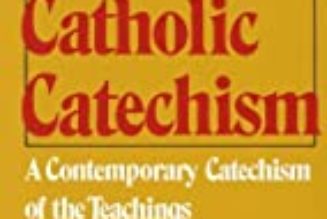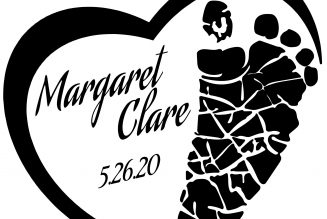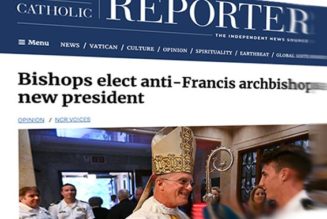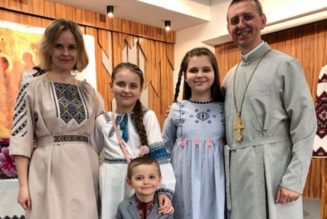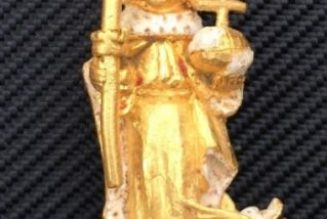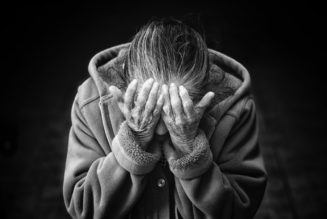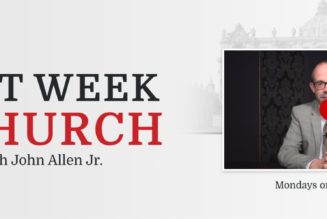NEW YORK – When Crux asked Bishop Chad Zielinski some months ago what it takes to lead the Diocese of Fairbanks, Alaska, he explained that it takes a missionary zeal to embrace a different culture, along with the stamina to travel 65 percent of the time, live out of duffel bags, sleep on church floors and travel between villages via snowmobiles, boats and four-wheelers.
“I used to compare it to living on a military deployment, without all of the gunshots and violence and whatnot,” said Zielinski, who has served in the Air Force and as a military chaplain. “It was rugged.”
Crux approached Zielinski with the question this past April, about six months after he left the Diocese of Fairbanks, where he was bishop for about eight years, to lead the Diocese of New Ulm, Minnesota.
The Vatican has now announced who will follow in Zielinski’s footsteps as Fairbanks’ next bishop, and it’s someone cut from his same cloth – someone with a military background who has already shown a willingness and eagerness, a “missionary zeal,” to embrace the Northern Alaska culture.
The Vatican announced on July 11 that Father Steven Maekawa, a Dominican Friar of the Province of the Most Holy Name of Jesus, who is currently the pastor of the Holy Family Old Cathedral in Anchorage, Alaska, will be the next bishop of the Diocese of Fairbanks.
Maekawa, 55, in his current role has created an outreach program to serve the isolated Catholic Yupik and Inuit communities in Alaska, who have long been without resident priestly ministry. From 2001-2011, Maekawa also held various positions as a chaplain in the U.S. Navy Reserve, and was even awarded a special medal while he was in active duty from 2009-2011.
Zielinski actually met Maekawa in 2005 when their military duties overlapped, and then reconnected with him in 2014, when Maekawa was the local superior of the Dominican community in Anchorage. Zielinksi said Maekawa is an “excellent choice” to lead the Northern Alaska faithful.
“I was very impressed with his missionary zeal, love of Alaska, and desire to reach the Native communities that only had Mass about once every eight weeks,” Zielinski said in a statement after the appointment was announced. “This is a great day of rejoicing for the Diocese of Fairbanks.”
Archbishop Paul Etienne of Seattle, who led the Archdiocese of Anchorage-Juneau from 2016 to 2019, through which time Maekawa led Holy Family Old Cathedral, told Crux in a statement that Maekawa is “well qualified as a pastor” to lead the Diocese of Fairbanks, adding that he’s a “prayer, humble, hard-working, and filled with a strong faith.”
In a July 11 news conference from the Diocese of Fairbanks, Maekawa said his appointment is both an honor and surprise. He said the diocese is likely to be the most unique place for ministry and for the life of the church given the reality of the distances between villages, and challenges with resources, transportation, getting people the sacraments and helping them practice the faith.
“I cannot think of a more exciting place to serve our Lord Jesus and the church than here in the Diocese of Fairbanks, and in this great state of Alaska,” Maekawa said. “The diocese has a great history of faith and devotion to the Lord, all within the context of the ever continuing and unique challenges.”
The Diocese of Fairbanks is the largest diocese geographically in the U.S., covering 409,849 square miles in Northern Alaska – about 1.7 times the size of Texas, and about 2.5 times the size of California. Its Catholic population of 11,876 Catholics is one of the smallest among U.S. dioceses.
The diocese has 46 parishes, 37 of which are in remote Northern Alaskan villages, and only about nine of which can be driven to, according to Zielinski. The Diocese of Fairbanks is also a mission diocese. Only eight of the 46 parishes are self-supporting financially.
Each village only has Mass about once every eight weeks because there’s a limited number of priests in the diocese, who each cover three or four villages, and stay at a village for two weeks at a time before traveling on to the next. There are some permanent deacons across the diocese, as well as lay people who are trained to do communion services, burials and other types of sacramental preparation, Zielinski said.
What struck Zielinski most about the diocese was the uniqueness of its culture. He said many of the people in the diocese live below the poverty level, “but at the same time live a subsistence way of life where they depend on fishing and hunting to provide for basic needs.”
“There’s an incredible missionary need for resources and personnel, but the people have this – I’ve never seen this before – they have a profound attitude for gratitude,” Zielinski explained. “They are incredibly grateful for anything that you do for them. They thank God for every fish, every berry they harvest, every animal that they harvest, as it comes from the hands of the creator.”
“You just see that pervasive attitude amidst some of their sociological challenges, and cultural differences amidst living in the extreme Arctic environment,” he added.
Maekawa is a native of Washington State. He has a bachelor’s degree in Architecture from the University of Washington, and a Master of Divinity from the Dominican School of Philosophy and Theology in Berkeley, California. He was ordained a priest in 1998 in Oakland, California.
He began his career as a parochial vicar for a church in San Francisco, California, from 1998-2002. He then led University of Washington in Seattle Newman Center from 2002-2005, at which time he became prior at St. Dominic Priory (Novitiate) in San Francisco from 2005-2007, and 2012-2016. During that period, he was also the director of vocations for the Western Dominican Province from 2007-2015. From 2016 until his recent appointment, Maekawa led the Holy Family Old Cathedral.
Maekawa did not respond to a Crux for comment on his new appointment. At the news conference, he said he most looks forward to meeting the clergy and faithful of the diocese.
“I look forward to getting to know the clergy and faithful of the diocese,” Maekawa said. “I look forward to meeting you and hearing your stories, getting to know you, the challenges and joys in your lives, and your testimonies of faith, and also serving you as your bishop.”
Follow John Lavenburg on Twitter: @johnlavenburg
